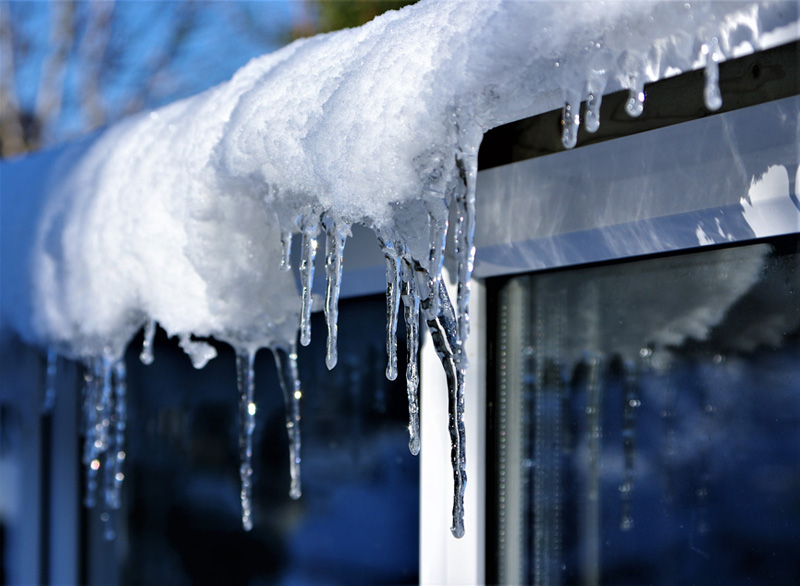Now that the holiday icicle lights are down (right?) it’s time to prevent the real things from wrecking your home.
Colorado is notorious for its freeze-and-thaw cycles. They play havoc with our roads and bridges, causing cracks and potholes. They crack our mountains, sending rocks and boulders tumbling onto highways and the cars driving on them, sometimes as large as the cars themselves. And when ice dams form on your roof, they can wreck roofs, gutters, and siding.
What is an Ice Dam?
Ice dams are created when melting snow refreezes before being carried away by your gutters and downspouts. As the freeze/thaw cycle continues, ice builds up to the point that the melted snow doesn’t drain completely and refreezes, preventing proper drainage and eventually damaging shingles, soffits, facia boards, siding, and, if it gets under your shingles, the roof underlayment itself.
Ice dams are a particular concern in Colorado, where bright, direct sunlight can cause snow to melt even on days when the temperature stays well below freezing. And when heavy, wet spring snows come, there’s even more water that needs to be carried away safely.
Preventing Ice Dams
The old-school way to prevent ice dams involved sweeping accumulated snow off the roof. Needless to say, it was both inconvenient and fraught with peril. Today, attic insulation, attic and soffit vents, and sealing leaks of warm air into the attic are a good first step to preventing ice buildup on your roof. But in our climate, that’s often not enough. Roof deicing cables let homeowners avoid ice dams that occur despite other preventive measures.
Deicing cables come in a variety of styles in various lengths and with different features. Some are designed to be installed under the shingles several feet from the roof’s edge. These are relatively inexpensive to install on a new roof before the shingles are laid down but are expensive and impractical otherwise.
For existing roofs, deicing cables are available that mount on the roof’s edge in a zigzag pattern to create channels for the melted snow to run into the gutters and be carried away. It’s also important to allow that water to flow away from the house to avoid foundation problems, just as you do with rainwater. That may require heating cables to be run inside downspouts as well to prevent them from being blocked by ice.
Safely Installing and Maintaining Deicing Systems
While some deicing cables are advertised as “DIY friendly,” they all involve working high up a ladder and must be connected to an outdoor GFCI outlet or hardwired into your home’s electrical system. Besides the risk of accidents, the system must be properly installed for correct operation and long-term safety. Unless you’re very familiar with electrical loads and home wiring (and have cat-like reflexes) we strongly recommend hiring a professional to install your home deicing system.
Allstar Electrical Knows Deicing
The licensed pros at Allstar Electrical Services will install your roof deicing system safely and efficiently. First, we’ll help you select the deicing system and features that are right for you. Then we’ll determine if its electrical load can be carried safely by your existing service. Your outdoor outlets may be connected to household circuits that aren’t designed for the extra current needed for deicing, resulting in annoying breaker trips and potentially disastrous short circuits and overheating.
Once the system is chosen and electrical connections are ready to go, we’ll install the cables in the most efficient way for your roof design so you can rest assured that your roof will remain ice-free throughout this season and many more to come.
We’re Just a Call or Click Away
If you need roof deicing or any other electrical work, give Allstar Electrical Services a call at 303.399.7420 or visit our website. We’re top-rated by the Better Business Bureau and a preferred contractor by Angi’s Home Advisor®.
The pros at Allstar Electrical Services look forward to serving your electrical needs through the remainder of the year and for many more to come.


